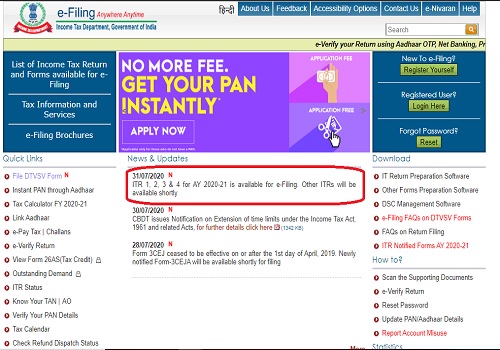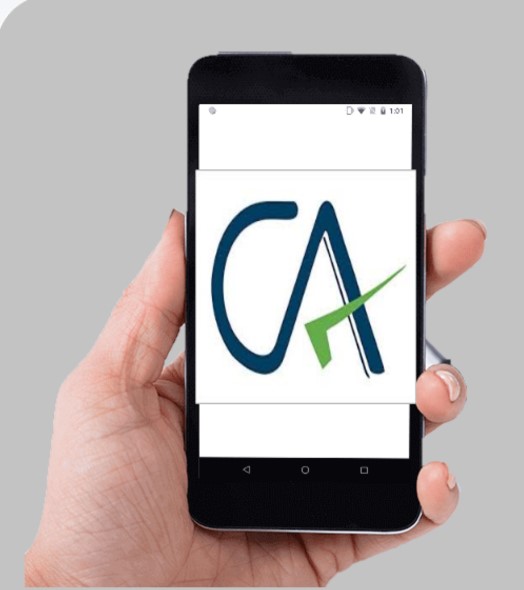Income Tax return for FY 2019-20 were announced, however till date only ITR 1, 2 and 4 were available for filing. Now ITR 3 is also available for filing on e filing website.
So, let’s have a look on what are some important amendments in ITR 3 and who are eligible to file the same.
First of all ITR 3 is the biggest and exhaustive return as far as Individual and HUF is concerned. Any type of income can be shown in ITR 3 and there are no restriction in ITR 3 as we see in ITR 1, 2 and 4.
Let’s first see who are eligible to file ITR 3 Form:
The heading of ITR 3 read as under: “For individuals and HUFs having income from profits and gains of business or profession”, but as mentioned above it is the most exhaustive return.
Also people are confused whether one can file presumptive taxation income under ITR 3 the answer is yes. We shall discuss on same in our Future post on Myths about Income Tax return busted. Also any person who is a partner in any firm has to file ITR 3.
Below are the major amendments in ITR 3:
1. Compulsory filing of return if these conditions are fulfilled:
Are you filing return of income under Seventh proviso to section 139(1) but otherwise not required to furnish return of income?
If yes, please furnish following information. [Note: To be filled only if a person is not required to furnish a return of income under section 139(1) but filing return of income due to fulfilling one or more conditions mentioned in the seventh proviso to section 139(1)]
Have you deposited amount or aggregate of amounts exceeding Rs. 1 Crore in one or more current account during the previous year? (Yes/No) Amount (Rs) (If Yes).
Have you incurred expenditure of an amount or aggregate of amount exceeding Rs. 2 lakhs for travel to a foreign country for yourself or for any other person? (Yes/ No) Amount (Rs) (If Yes)
Have you incurred expenditure of amount or aggregate of amount exceeding Rs. 1 lakh on consumption of electricity during the previous year? (Yes/No) Amount (Rs) (If Yes)
2. Schedule DI:
As we know due date for investment under 80C to 80U and 54 to 54G was extended to 30.06.2020 and many of us were confused on how it would be shown in ITR and how would they know that amount paid after 01.04.2020 belongs to FY 2019-20 or 2020-21.
Now CBDT has inserted a new schedule, Schedule DI wherein a person need to mention that out of total deduction how much belongs to April, 2020 to July, 2020 period.
Therefore, still it is self declaration and we still dont know how will it be known if a person is taking the same deduction twice and for that we need to wait for next year’s ITR.
3. Increase in Audit limit:
In Budget 2020, there was an amendment in section 44AB according to which audit limit of Rs. 1 crore would be enhanced to 5 crore if cash receipts and cash payment is less than 5% of total receipt and total payment respectively.
Also, many people were confused whether the new audit limit would apply for FY 2019-20 or FY 2020-21 and the release of ITR has removed this doubt and the new limit would be applicable for FY 2019-20.
However still complete definition of receipt and payment has not been provided by CBDT used in this provision.
In this regard they have made introduced 2 changes in ITR Form which are again self declaration:
(a2i) If No , Whether during the year Total sales/turnover/gross receipts of business exceeds Rs. 1 crores but does not exceed Rs. 5 crores?
(a2ii) If Yes is selected at a2i, whether aggregate of all amounts received including amount received for sales, turnover or gross receipts or on capital account like capital contributions, loans etc. during the previous year, in cash, does not exceed five per cent of said amount?
(a2iii) If Yes is selected at a2i, whether aggregate of all payments made including amount incurred for expenditure or on capital account such as asset acquisition, repayment of loans etc., in cash, during the previous year does not exceed five per cent of the said payment?
Even though the above information doesn’t provide information it gives a hint that receipt and payment would include all revenue and capital receipt and payment.
This are the three major amendments in ITR 3 other than these everything is the same as previous year.
However it is still suggested to file return after 15th August once everyone files their TDS return till 31st July for last quarter FY 2019-20 and TDS credit is available in Form 26AS.
CLICK HERE to file your Income Tax return, with the help of our experts.
This article is just for information purpose and are personal views of the author. It is always advisable to hire a professional for practical execution or you can mail us. If you need assistance you can ask a question to our expert and get the answer within an hour or post a comment about your views on the post and also subscribe to our newsletter for latest weekly updates.












